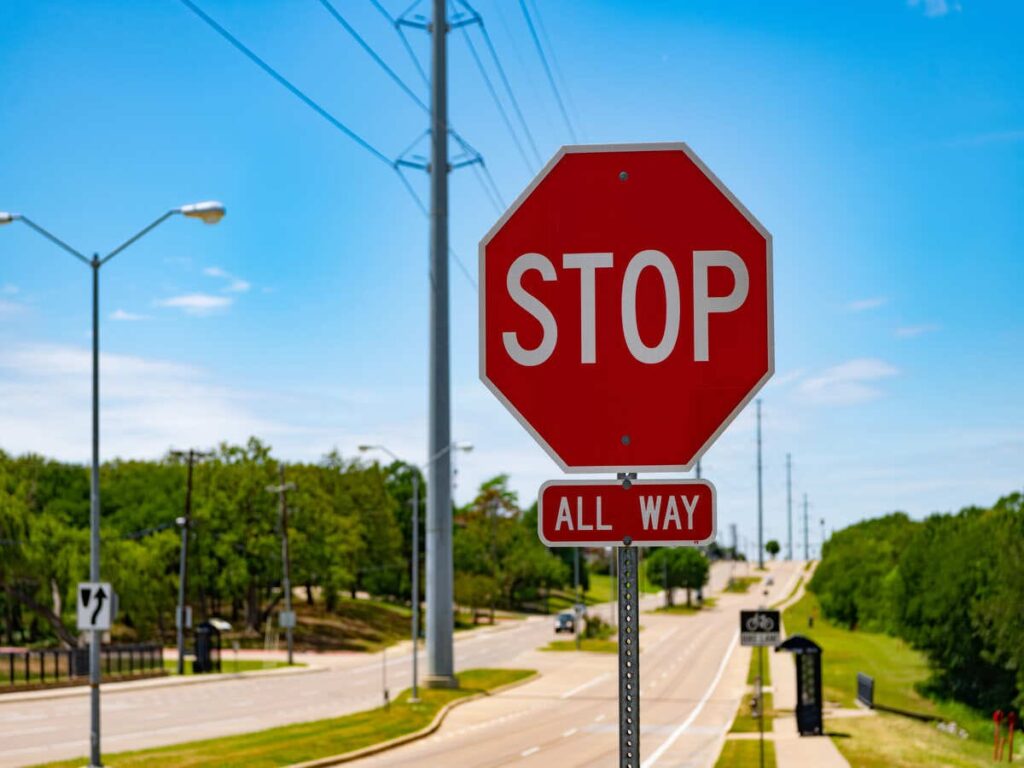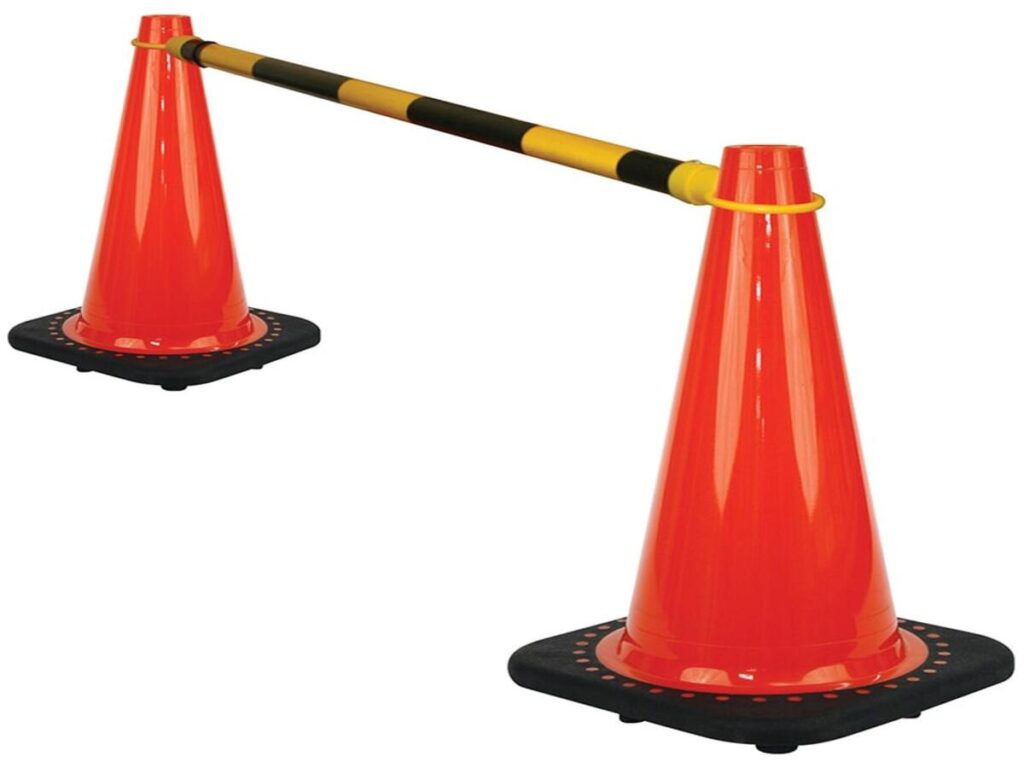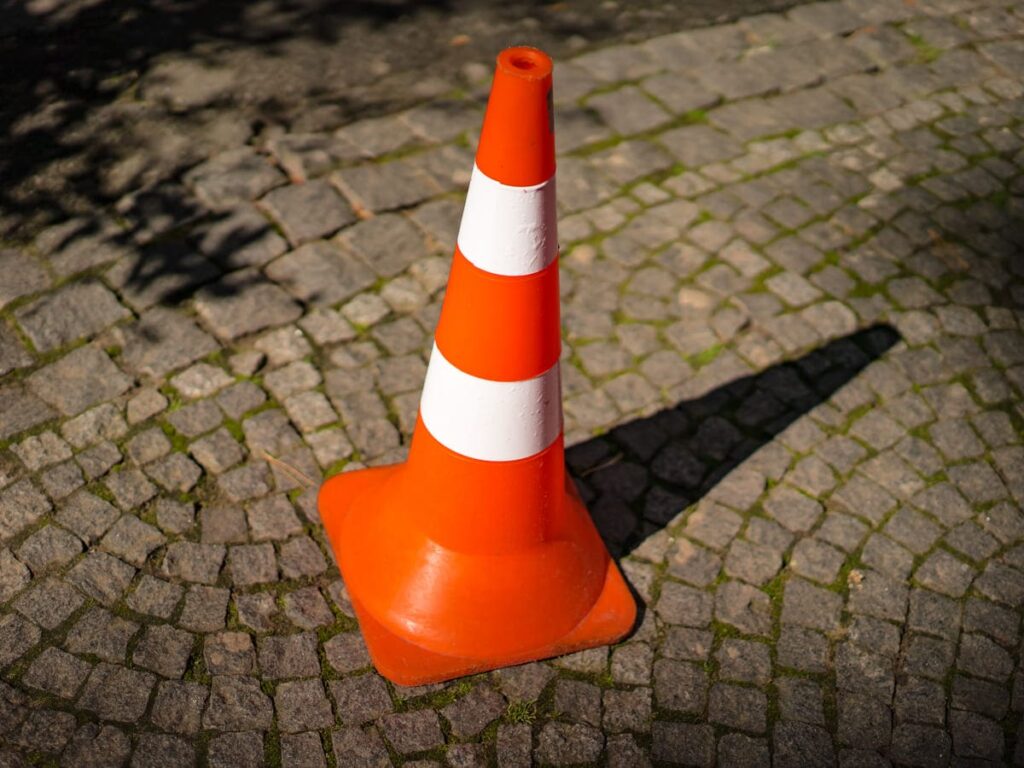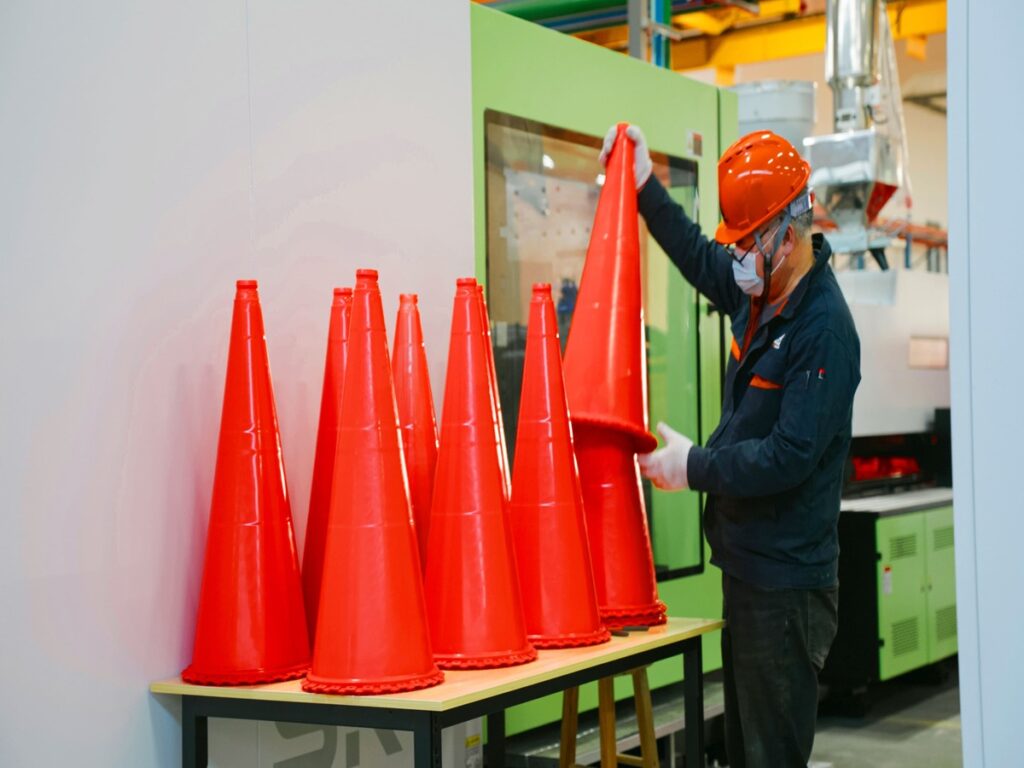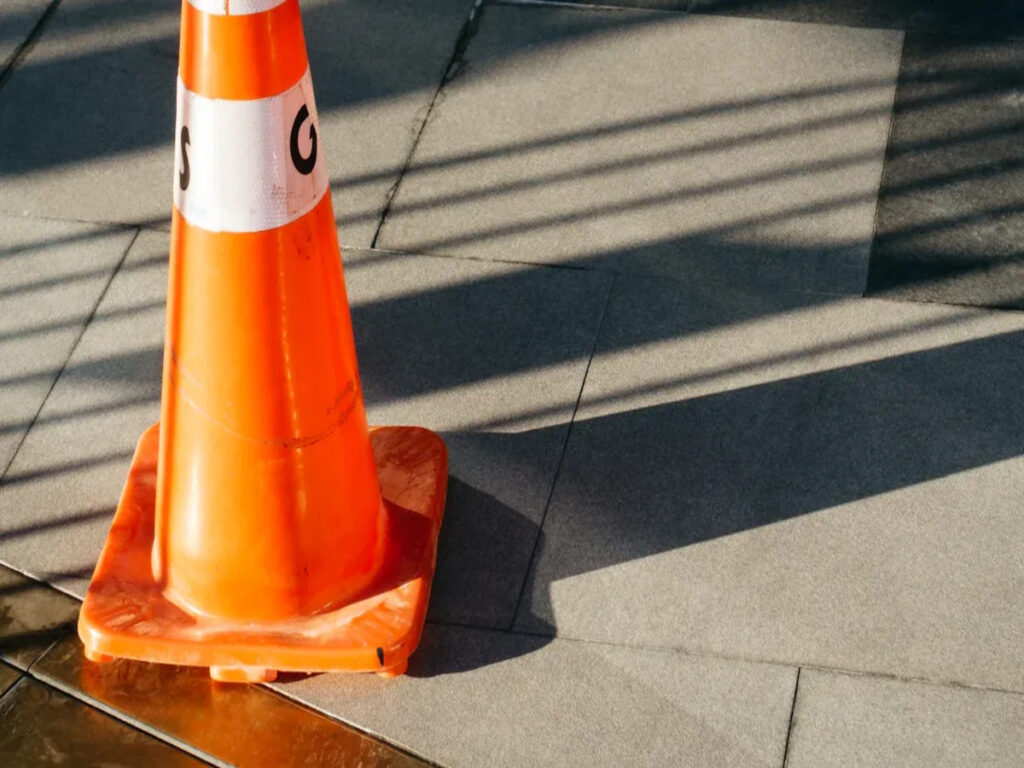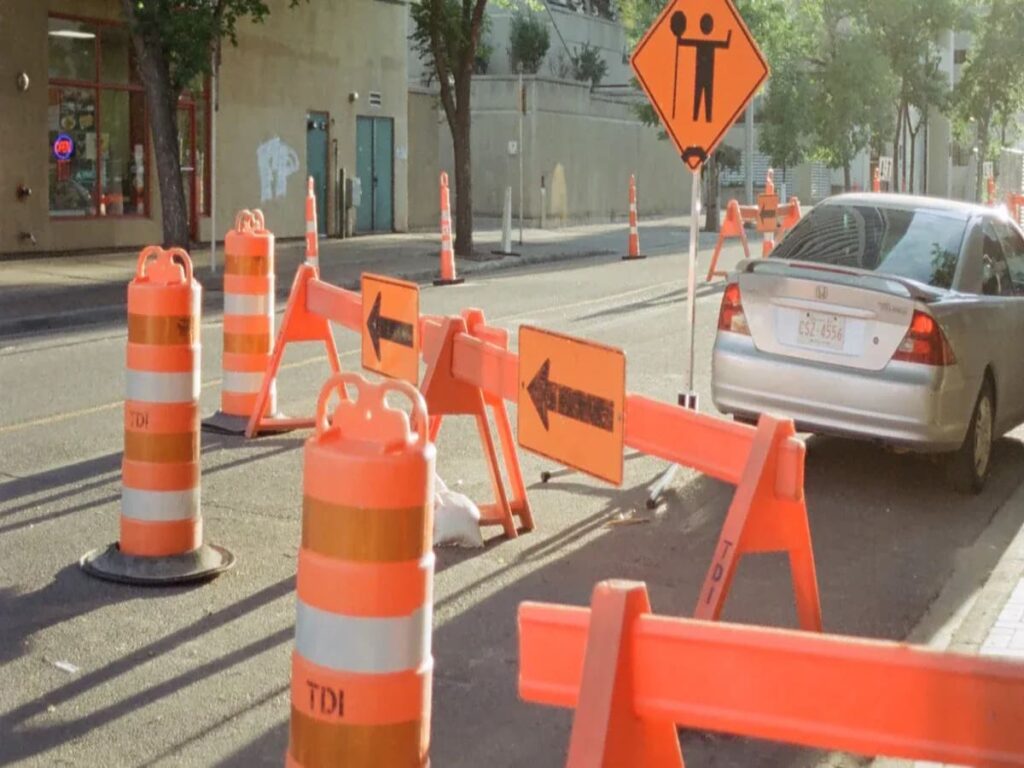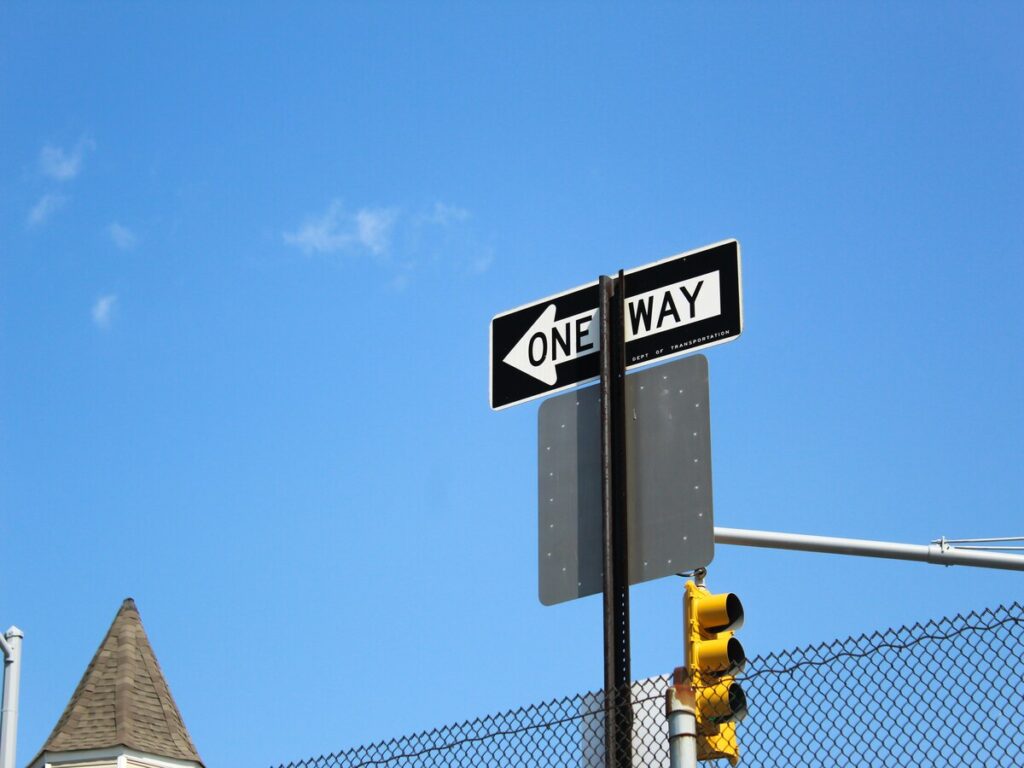
Aula 3 Os sinais de trânsito refletivos são muito importantes em lugares movimentados. Esses sinais seguem o rigoroso AS/NZS 1906.3 padrão. Este padrão garante que os sinais de trânsito sejam muito fáceis de ver. Os motoristas podem ver bem esses sinais à noite e com mau tempo. Melhor visibilidade ajuda a interromper acidentes e mantém todos mais seguros. Especialistas em segurança rodoviária, planejadores de tráfego, e os engenheiros usam aula 3 Para manter as estradas ocupadas seguras. Boa visibilidade e forte segurança tornam a folha necessária onde há muito tráfego.
Na OPTRAFFIC, nós fornecemos high-quality reflective signs that meet the AS/NZS 1906.3 padrão, ensuring optimal visibility and safety on busy roads. Our safety signs are designed to help traffic planners and road safety professionals maintain safer driving conditions.
For more detailed information on reflective sign sheeting, Confira nosso blog em Visão geral dos padrões refletivos de lençóis de sinais de trânsito na Austrália.
Aula 3 Sinais de estrada reflexivos
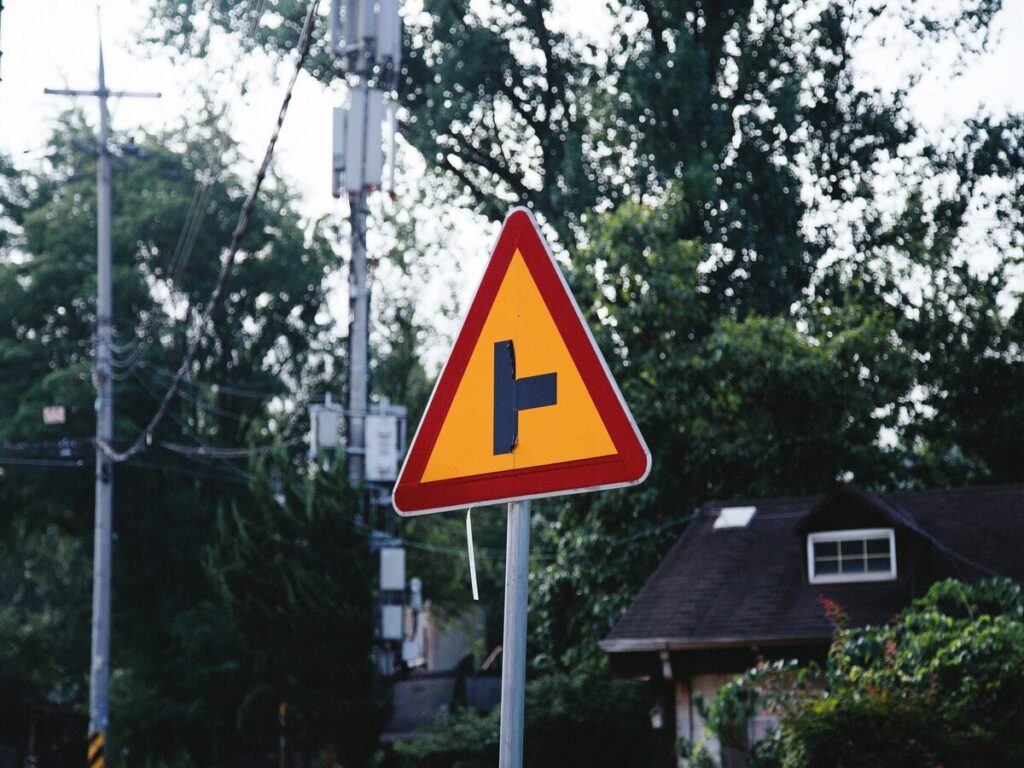
Standards and Technology
Aula 3 reflective traffic signs use new technology to be very visible. Engineers pick strong materials that last a long time. These materials must meet tough safety rules. The main part of these road signs is often aluminium or aluminium composite. These materials do not rust and can last for years. The sheeting uses alta intensidade prismática ou diamond grade sheeting. This special sheeting has a prismatic structure. The structure sends light back to drivers. This helps drivers see the signs even when it is dark or rainy.
New material science has made these signs reflect light even better. Makers use PMMA, which is good at letting light pass through. This makes the signs brighter and last longer. High-intensity and diamond grade sheeting both help return more light. Empresas gostam 3M e Avery Dennison keep making these signs better. They want signs to be brighter, mais forte, e melhor para o meio ambiente. Smart technology and green materials are now used in new sign designs.
Observação: The prismatic structure in diamond grade sheeting helps drivers see signs at night and in rain. This is very important for busy roads.
AS/NZS 1906.3 Conformidade
Aula 3 reflective traffic signs must follow the AS/NZS 1906.3 padrão. This standard tells what the signs must be like. It covers retroreflective sheeting, cor, e brilho. The standard makes sure every sign works well in all weather. The table below lists some main technical points for these signs:
| Aspecto | Detalhes da especificação |
|---|---|
| Substrate Materials | Aluminium sheets (Não enferruja); Aluminium Composite Material with LDPE core |
| Felas reabilitadoras | Cobertura prismática de alta intensidade, diamond grade sheeting (best for fast roads) |
| Colour and Luminance | Must meet colour and brightness rules for day and night |
| Support Structures | GI pipes, hollow sections; must have anti-rust treatments |
| Diretrizes de colocação | Altura: 600 mm para 3 m from road edge; Overhead clearance: 5.5 m |
| Manutenção | Check twice a year, limpar, repaint, and replace faded sheeting |
| Legal and Safety Importance | Makes sure signs are the same, jurídico, e seguro |
Retroreflective sheeting must pass tests for how well it reflects light. Special tools check how much light goes back to drivers. These strict rules make sure every sign on busy roads is safe and works well.
Vantagens da classe 3 Folha reflexiva
High Reflectivity and Enhanced Visibility
Aula 3 sheeting is very bright and easy to see. Engineers use microprismatic technology to make it work well. Tiny prisms in the sheeting bounce light back to drivers. When headlights hit the sign, the light goes straight back. This makes the sign much brighter and easier to spot from far away.
Reflective signs help drivers when it is hard to see. Chuva, névoa, and darkness can hide signs from view. Aula 3 reflective road signs fix this problem. They give important visibility on busy roads and highways. These signs work well at night and during storms. Drivers get clear help, so they can make safe choices.
Observação: Microprismatic sheeting lets drivers see signs from farther away. Em Queensland, research showed drivers could see signs from 90 metres before. After using high-grade retro-reflective sheeting, they could see from over 300 metros.
Durability and Resistance
Aula 3 sheeting is strong and lasts a long time. Makers use tough materials that can handle bad weather. The sheeting stands up to UV rays, chuva, e calor. This means the signs stay bright for many years. Na Austrália, signs face sun, vento, and heavy rain. Aula 3 sheeting keeps its brightness and colour, even in these tough places.
The reflective part does not fade quickly. The sheeting keeps working well, so drivers always see the signs. Maintenance teams do not need to replace Class 3 sheeting often. Isso economiza tempo e dinheiro. Busy roads benefit from signs that last a long time.
A simple table shows how Class 3 sheeting is better than lower grades:
| Recurso | Aula 3 Felas | Lower Grades |
|---|---|---|
| Refletividade | Muito alto | Médio |
| Resistência ao tempo | Excelente | Bom |
| Vida útil | 10+ anos | 5-7 anos |
| Necessidades de manutenção | Baixo | Médio |
Impacto de segurança
Roads are safer with Class 3 Sinais de trânsito reflexivos. The bright signs help drivers see them sooner. Seeing signs early gives drivers more time to react. Isso diminui a chance de acidentes, especialmente em lugares movimentados.
Studies show Class 3 sheeting makes roads safer. A Monash University study found roads with bright signs had 25% fewer accidents than roads with faded signs. Another report said using high-intensity reflective sheeting, como classe 3, cut crashes by up to 46% over several years. These results show how important reflective signs are for stopping accidents.
Reflective signs help drivers at tricky intersections and busy highways. The sheeting makes sure signs are clear, mesmo à noite ou em mau tempo. Road safety gets better for everyone, incluindo motoristas, ciclistas, e pessoas andando.
Dica: Upgrading to Class 3 sheeting makes roads safer. It helps stop accidents and supports long-term safety plans.
Ideal Applications of Class 3 Folha reflexiva
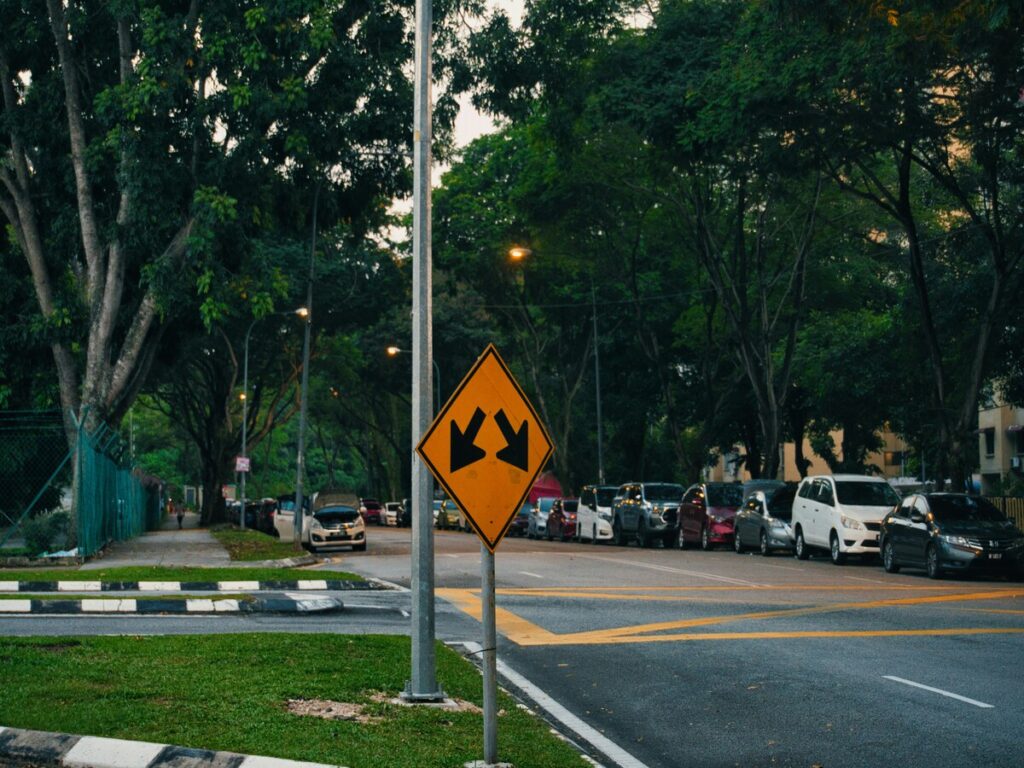
Áreas de alto tráfego
Aula 3 reflective traffic signs are very important on fast roads. Engineers put this sheeting on highways and motorways. Cars move quickly in these places. Drivers must see signs clearly and early. The sheeting makes signs easy to spot from far away. On the Pacific Motorway in New South Wales, exit signs and lane markers use Class 3 Felas. This helps drivers notice signs sooner and make safe choices. Busy intersections also use these signs. Traffic planners pick Class 3 sheeting to stop confusion and keep people safe.
Urban and Suburban Areas with High Risk
Urban roads have lots of cars and many people walking. Aula 3 sheeting helps keep everyone safe in these busy places. Em Melbourne, councils put better reflective signs at tram crossings and school zones. The new sheeting made signs easier to see in rain and at night. Drivers could follow the signs better, so there were fewer accidents. Suburban areas with tricky roundabouts or bus lanes also use this sheeting. The bright signs help both drivers and cyclists stay safe together.
Zonas de emergência
Emergency zones need signs that are easy to see right away. Locais de construção, crash scenes, and detours all need clear signs. Aula 3 sheeting stands out in these important places. Em Queensland, road crews used this sheeting for flood detours. The signs stayed bright in heavy rain and low light. Both emergency workers and drivers trusted the signs to move safely. This kept everyone safe and helped traffic keep moving.
To learn more about how different road traffic safety signs vary by environment and use case, Confira nosso blog em Como os sinais de segurança no trânsito variam de acordo com o ambiente: Um guia prático para sinalização por caixa de uso.
Comparing Reflective Traffic Sign Grades
Aula 2 vs Class 3
Aula 2 e classe 3 reflective sheeting both help drivers see road signs. No entanto, they work best in different places. Aula 2 sheeting suits roads with less traffic. It gives good visibility for slower speeds and smaller roads. Aula 3 sheeting stands out on busy roads and highways. It uses advanced microprismatic technology. This technology makes signs much brighter and easier to see from far away.
A tabela abaixo mostra as principais diferenças:
| Recurso | Aula 2 Felas | Aula 3 Felas |
|---|---|---|
| Refletividade | Médio | Muito alto |
| Durabilidade | 5-7 anos | 10+ anos |
| Melhor uso | Low/Medium traffic | Tráfego alto |
| Faixa de visibilidade | Curto | Longo |
Aula 3 sheeting helps drivers react faster in heavy traffic. It keeps signs clear in rain, névoa, E à noite. Aula 2 works well for local streets and areas with less risk.
Cost and Performance
Aula 3 reflective sheeting costs more than Class 2. The higher price comes from better materials and longer life. Ao longo do tempo, Aula 3 saves money because it needs less maintenance and fewer replacements. Councils and road planners often choose Class 3 for places with lots of traffic or high risk.
When choosing between Class 2 e classe 3, planners look at traffic volume, velocidade, and accident risk. Aula 3 is the best choice for highways, cruzamentos ocupados, e locais onde a segurança é mais importante. Aula 2 fits quiet roads and areas with less danger.
Dica: For roads with heavy traffic or poor visibility, Aula 3 reflective sheeting gives the best safety and value.
Manutenção e longevidade
Durability Factors
Aula 3 reflective sheeting stands out for its strength and long life. Manufacturers design this sheeting to handle tough conditions on busy roads. The materials resist fading and damage from sunlight, chuva, e calor. Engineers test the sheeting in many ways to make sure it stays bright and clear.
- Tests use Xe Arc Lamps to check how well the sheeting reflects light after long exposure to weather.
- Colour and brightness tests show the sheeting keeps its look even after rain, washing, and bending.
- UV stabilisers protect the sheeting from sunlight, meeting strict safety rules.
- Temperature tests prove the sheeting works well in both hot and cold weather.
- Impact and bending tests show the sheeting can handle knocks and scrapes.
- Water and fuel resistance tests confirm the sheeting stays strong in wet and dirty places.
These tests follow standards like ASTM and ISO. They show that reflective traffic signs last for many years, even in harsh Australian climates.
Maintenance Best Practices
Proper care helps Class 3 reflective sheeting perform well over time. Road crews should check signs twice a year. They look for fading, sujeira, ou dano. Cleaning with mild soap and water keeps signs bright. If a sign looks dull or hard to read, it may need new sheeting.
A simple checklist helps teams know when to replace signs:
- The sign looks faded or less bright at night.
- The surface has scratches or peeling.
- Drivers report trouble seeing the sign.
Dica: Regular checks and cleaning help signs stay safe and easy to see. Early replacement of worn signs keeps roads safer for everyone.
Aula 3 reflective road signs are very easy to see and last a long time. They use special prismatic technology, so the signs are bright in any weather. Many experts say Class 3 is best for risky places like expressways and school zones. Os motoristas podem identificar esses sinais de longe. Using this type of road sign makes roads safer and follows strict rules. Professionals should check their signs now and think about how better visibility helps in the future.
Perguntas frequentes
O que é classe 3 Folha reflexiva?
Aula 3 reflective sheeting is a high-grade material used on road signs. It uses microprismatic technology to reflect light back to drivers. This makes signs much brighter and easier to see, especialmente à noite ou com mau tempo.
Where should councils use Class 3 Folha reflexiva?
Councils should use Class 3 sheeting on highways, cruzamentos ocupados, and areas with high accident risk. It works best where fast traffic or poor visibility makes safety a top concern.
Quanto tempo a classe 3 Felas reflexivas por último?
A maior parte da aula 3 sheeting lasts over 10 anos. It resists fading from sunlight, chuva, e calor. Regular checks help keep signs bright and clear for as long as possible.
Class 3 sheeting meet Australian standards?
Sim. Aula 3 A folha reflexiva atende ao AS/NZS 1906.3 padrão. This ensures the material is safe, brilhante, and reliable for use on Australian roads.
Why is Class 3 better for high-traffic roads?
Aula 3 sheeting gives the highest reflectivity. Drivers see signs from further away. This extra time helps them react safely, reducing the chance of accidents in busy or dangerous areas.

